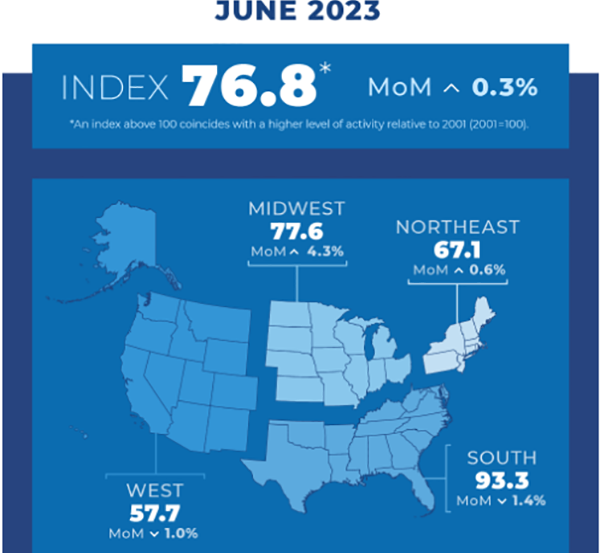
Pending Home Sales Tick Upward

Pending home sales registered a modest increase of 0.3% in June–the first increase since February–the National Association of Realtors reported Thursday.
The NAR Pending Home Sales Index said the South and West regions posted monthly losses while sales in the Northeast and Midwest grew. All four U.S. regions saw year-over-year declines in transactions.
“The recovery has not taken place, but the housing recession is over,” NAR Chief Economist Lawrence Yun said. “The presence of multiple offers implies that housing demand is not being satisfied due to lack of supply. Homebuilders are ramping up production and hiring workers.”
The index, a forward-looking indicator of home sales based on contract signings, rose 0.3% in May to 76.8. Year-over-year, pending transactions fell by 15.6%. An index of 100 is equal to the level of contract activity in 2001.
NAR forecasts the 30-year fixed mortgage rate will hit 6.4% this year and then decline to 6.0% in 2024, while the unemployment rate will rise slightly to 3.7% in 2023 before increasing to 4.1% in 2024.
“With consumer price inflation calming close to the Federal Reserve’s desired conditions, mortgage rates look to have topped out,” Yun said. “Given the ongoing job additions, any meaningful decline in mortgage rates could lead to a rush of buyers later in the year and into the next.”
NAR noted it expects existing-home sales to decrease 12.9% from 2022 to 2023, settling at 4.38 million, before climbing 15.5%, to 5.06 million next year. Compared to last year, national median existing-home prices will likely remain steady, declining 0.4% to $384,900, before rebounding by 2.6% next year, to $395,000.
Yun said housing supply should be expanded as much as possible to widen access to homebuying for more Americans. “Home prices will be influenced by how much inventory is brought to market. Increased homebuilding will tame price growth, while limited construction will lead to home price appreciation outpacing income growth,” he said.
